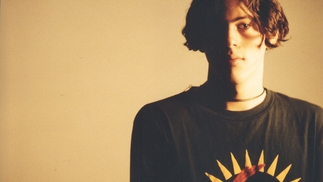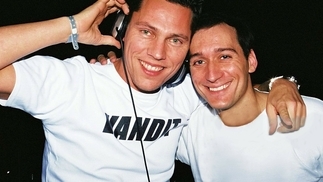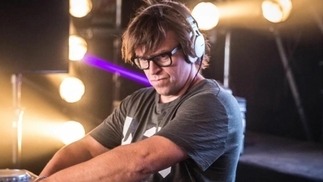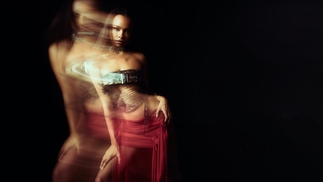Ejeca's Trance Wax is breathing new life into classic trance
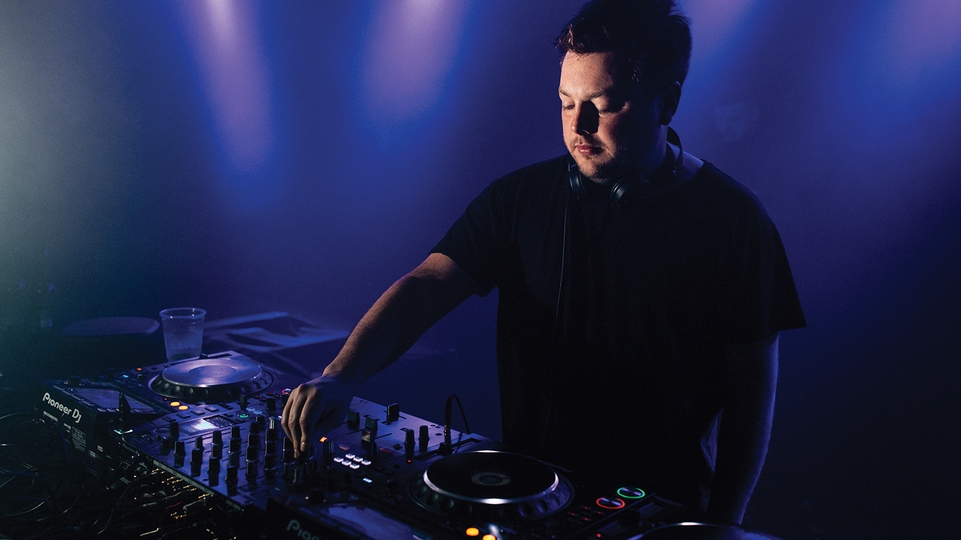
In his first interview under the Trance Wax moniker, Ejeca tells us about the origin of the project, uniting young clubbers and older ravers, and more...
PICS: Clarke James, AJR Photography, Stuart Taylor & Grant Jones
Taking classics from trance’s golden age and recontextualising them for the modern dancefloor? In the wrong hands, this concept could spell danger: crass, overly nostalgic and about as necessary or appropriate as an EDM reboot of Human Traffic. In the right hands, though, there’s a whole new lifecycle and exciting set of dots to join. Less of a recontextualisation, more an entirely new context; it’s a story that now goes two generations deep, it maps the changes in dancefloor culture and it marks a much broader musical shift in electronic music in general. Most pertinently, it’s a story that Garry McCartney is very much interested in telling.
“Isn’t it great when you hear something you haven’t heard in 15 years and it makes you go, ‘What the hell?’” asks McCartney from his Brighton studio one cold December afternoon, his sincerity and enthusiasm compounded by his strong Belfast brogue. “It’s like hearing a whole new tune. There’s nothing quite like it.” This was exactly the case for McCartney four years ago on a holiday in Asia. A three-week retreat in the eye of his breakthrough storm, at the time he’d hurtled headfirst into the game as Ejeca. His years of studio craft and local circuit diligence had finally dished out dividends; releases on revered imprints such as Aus, Tusk Wax and Sasha’s Last Night On Earth had propelled him into the spotlight as one of techno’s bright new hopes. And at some point during this, amid his Essential New Tune accolades and Bicep collaborations, he found himself in Thailand — the Phi Phi Islands, to be precise — listening to old trance records.
“It’s so beautiful out there, and at the time, I had started going through all my old trance collection, tracks like Atlantis’s ‘Fiji’. I remember thinking, ‘Wow, this is all just so lovely’,” he says, pausing to no doubt reimagine the moment — the stunning location, the euphoric vibe of the music and a healthy smidgeon of nostalgia leading him back onto the first electronic music path he’d ever explored. Right there, at that very moment, Trance Wax was born.
IN A TRANCE
It would be several years later when people started to realise who Trance Wax was, however. That’s only really become apparent in the last year. Even now, two years into the project, this is McCartney’s first ever interview under the moniker. Before anything, he needed to know who Trance Wax was... and how he might go about bringing it to life. “Well as lovely as it is, I realised a lot of people don’t play trance because the records are eight minutes long, the breakdown is a minute-and-a-half and it’s 140bpm,” says McCartney, who started by experimenting with original trance records in his Ejeca sets, pitched down to the more appropriate speed. “Those types of dynamics don’t communicate so well with the crowd nowadays. Everyone wants a 30 second drop for Instagram, and people are too impatient for big breakdowns now too.”
So he started bringing the classics up to date via a series of now highly sought-after white labels. Slower, shorter, more spacious than the originals, and entirely relevant to contemporary house or techno sets, the gilded, goose-bumping chord progression of Mauro Picotto’s ‘Lizard’ is given the rolling break it always screamed for, BT’s poignant heart-plucker ‘Flaming June’ is re-pitched and rearranged over a springy electroid step, Atlantis & Avatar’s ‘Fiji’ and Three Drives & Vinyl’s ‘Greece 2000’ are both given a soft focus sunset glow, and Moby’s ‘Go’ takes a more ominous tone thanks to its rattled techno touch. Over 18 months, he zapped 16 golden age cuts back to life with his Ejeca defibrillator. Some are anchored by a stark, dark technoid relentlessness, but most are laced with the type of roomy, floaty breakbeats you used to find on Red Jerry’s famous Hooj Choons.

“I find the breakbeat brings things down a level, it’s easier to slow things down that way,” says McCartney, who tends to describe Trance Wax as a breakbeat act rather than a trance act. It makes sense; the whole reason for this project is versatility. Trance Wax isn’t about nostalgia, or trance for trance’s sake. It’s about bringing certain aspects of it back into the mix because they work, they’re relevant and worth revisiting. It’s why the project began as an anonymous series — they’re DJ tools for Ejeca and other DJs to bring colour into their sets, regardless of genre.
“The edits were a nice way to have them in a house or techno set, and not catching people too off-guard or scaring them,” he says. “With a techno set it’s so nice to drop in something with a bigger breakdown to get the crowd more involved. Or if you’re playing a lot of trance, it’s nice to drop in some Detroit techno. They’re two different genres, but that doesn’t mean they shouldn’t go together.” Trust him, he’s got previous for this. It goes right back to his young record buying days in the early 2000s when he’d habitually confuse the record dealers in Belfast’s Mixmaster Records, buying tunes by both DJ Tiësto and DJ Rush. He also fondly recalls the original trance/techno/ hard dance melting pot that was bubbling when he was in short trousers. At 32, McCartney wasn’t actually clubbing when trance’s golden age was at its peak. Rather, he was soaking it up from his older brothers and cult satellite TV clubbing show Rapture TV, and experimenting with it on Fruity Loops before he was 10.
“Hard dance was a really interesting crossover. Take guys like Tony De Vit,” he poses. “His track ‘The Dawn’. It’s trance, it’s hard house, it could go into a techno set, and it worked. There was a different lineage at the time that allowed that type of versatility. Obviously you can’t imagine something like Alice Deejay with Chris Liebing, but there was definitely some sort of line drawn, I think, on that harder or faster side of electronic music.”
GO HARD OR GO HOME
So where’s the line for Garry? At what point did he flip from dropping anonymous trance edits in his Ejeca sets and start playing specific sets as Trance Wax? “It’s hard to know if I was always going to keep them anonymous,” he says. “When I started to incorporate these records into my sets I quickly realised that people’s perception of what trance is depends on where you play, what other DJs are playing and what age the crowd is. So I could go to Glasgow and play at 140bpm for two hours straight, and people would be dancing, tops-off sweating and crying for two hours. But in other places, like Ministry Of Sound, the dancefloor would be scared off by that. That’s when the Trance Wax sets developed a life of their own, when I realised I could play dif ferent types of sets from much deeper melodic things to pretty hard and fast. That’s where the Essential Mix worked — it can come from a chilled out melodic base and go on to something closer to hard house. I can tell much more of a story.”
Broadcast in June last year, the Ejeca Trance Wax Essential Mix was the watershed for McCartney, as it blurred both his aliases and told the Trance Wax story beyond the white labels and DJ sets. It documented where he was at with his trance explorations and, once again, it pitched him in the eye of a breakthrough storm, this time landing amid two hectic DJ schedules both as Ejeca and as Trance Wax, where he attracts some of the most excitingly age-diverse crowds this side of the recent Prodigy tour.
“The older heads are enjoying it for what it is, remembering it for what it was and appreciating how it’s been updated, and the younger heads are hearing it for the first time. To one lot it’s a classic, to the others it’s a track ID, and that’s beautiful,” McCartney says. “It’s exciting to have a crowd like that where there’s a 20-year age difference between them, but they’re both enjoying it together on the same level. This is the first time music has done that between two generations; I can’t think of any gigs I could go to with my dad and share that experience on that level. I think that’s unique to electronic music and how it develops; the nature of electronic music is progression with elements of nostalgia. It’s okay to take ideas and get inspiration, as long as you progress it and develop it. That’s happened all along.”
Here’s where an even wider picture emerges, one that documents where electronic music is at and how it’s got here. McCartney isn’t alone in this new trance chapter that’s resonating with both older timers and new ravers. Maceo Plex was hammering Der Dritte Raum’s cosmic 1998 creeper ‘Hale Bopp’ so much for a while that many mistook his down-pitched mix as his own edit, Nina Kraviz has been heralding classics such as Jam & Spoon’s ‘Age Of Love’ and Binary Finary’s ‘1998’, and Charlotte de Witte’s not shy of dropping the odd Ferry Corsten record deep in the mix. It would seem that the crisp skin-rippling musicality, soft harmonics and hopeful chord structures of trance are the perfect antidote to the garish EDM brushstrokes larger dancefloors have been subject to this decade. It’s the next logical step. A step, McCartney considers, that’s been there all along.
“There’s definitely a return to proper honest melodic music, but that’s always been there,” McCartney says. “Look at Stephan Bodzin. He’s been cracking the whip for years! His sound hasn’t changed much, but right now more people get it than they did, and he’s getting the recognition he’s deserved for years. Kompakt stuff from the mid 2000s was a development from trance. Look at Âme’s ‘Rej’. That totally fits into this musical category. It’s all very sophisticated now, tempos have slowed and arrangements have gone more experimental, but that chord structure and those textures have always existed.”

It’s true that the fabrics of trance have always been deep in the dance music weave, even at its most slated days, after its commercial saturation in the early/mid 2000s. But it’s where they go and the picture they paint next that inspires McCartney the most. This year will see him play his part in this on-going story as he continues to develop the Trance Wax project in a number of ways. He’s working with Above & Beyond’s Anjunabeats for his first official Trance Wax release later in 2019, and he’s got 20 new edits to drop on his white label vinyl series which, he promises, will always be 600 copies of each, and no represses.
You can expect even more expansive dot-joining exercises, too, as he recontextualises tracks as diverse and generation-bounding as Tangerine Dream’s 1984 Balearic blueprint ‘Love On A Real Train’ and Schiller’s super-club pumping 1999 anthem ‘Das Glockenspiel’, and he’s currently exploring more of a dark electro twist to some of his new edits. That’s in addition, of course, to the elements of trance he continues to weave into his Ejeca sets, too. Less of a rework, more an entirely new context; McCartney continues to map the changes and waymarks in dancefloor culture, constantly reminding us that the past isn’t always as far away from the future that electronic music has been obsessed with as we think.
“The more dots I join together, the more of a story I can tell,” he says. “Plus, I get bored making or playing the same genre every day. It’s nice to have both Ejeca and Trance Wax. The advice is to keep listening and see what comes next.”
